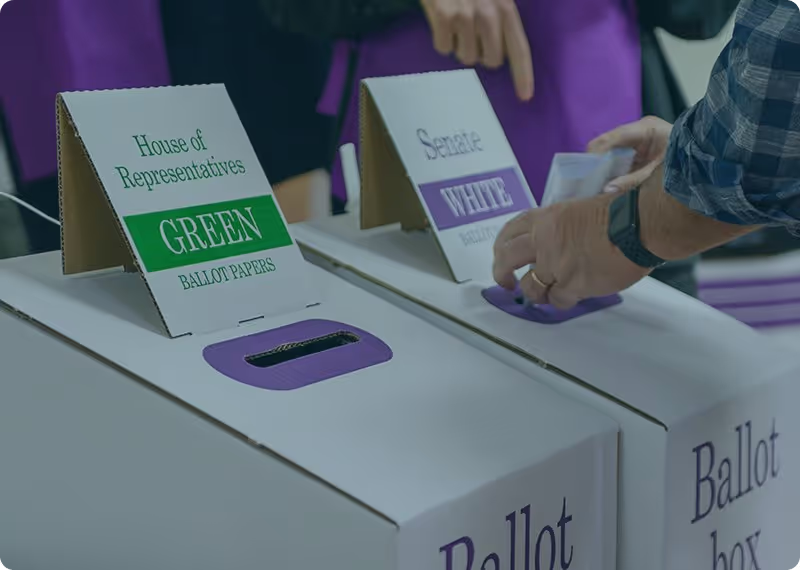What the 2025 Election Means for Workplace Laws

Following the 2025 Federal Election, the Labor Government has returned with a larger majority and a more cooperative Senate. If the last three years are any indication, this outcome creates the conditions for a busy legislative agenda, including further changes to workplace laws. Many of these changes build on reforms introduced over the past three years, while others reflect promises made during the election campaign.
This article covers recent changes already in effect, potential future reforms, and what your business can do to stay ahead of the changes.
Biggest changes from Labor’s last term
Over the past three years, workplace law in Australia has seen significant shifts. A range of changes have come into effect, many of which are still being tested through enforcement and interpretation.
Criminalisation of Wage Underpayments
As of January 2025, intentional underpayments of employees are a criminal offence under federal law. While enforcement is still in its early stages, regulators have begun increasing resourcing in preparation for investigations and prosecutions.
Changes to Casual Employment
The definition of a casual employee has shifted to focus on the practical nature of the employment relationship, rather than the terms at the start of engagement. This update also saw a change to process of converting from casual to permanent employment so that the request is initiated by the employee, rather than the employer needing to offer conversion regularly.
Instead, the employer must now provide the Casual Employment Information Statement to casual staff on a more regular basis - at the beginning of employment, after six months, after 12 months, and then every subsequent 12 months of employment.
Psychosocial Risk Obligations
Most states and territories have introduced workplace health and safety requirements around psychosocial hazards, with Victoria expected to follow soon. Employers must now take steps to manage risks related to job stressors such as high workloads, poor support, or low role clarity.
Positive Duty to Prevent Harassment
Since Decemember 2022, businesses have a legal obligation to actively prevent sexual harassment in the workplace. This duty is monitored by the Australian Human Rights Commission and businesses should have a policy accessible to staff regarding the topic and strategies in place to manage risk.
Other updates include:
- New rights around flexible work, unpaid parental leave, and domestic violence leave
- Gig worker protections, such as access to collective bargaining and termination rights
- Limitations on pay secrecy and fixed-term contracts
- Expanded protections for visa workers
- New rules on job ads, workplace delegates, and employee deductions
These reforms have introduced new compliance responsibilities across a wide range of industries, particularly those with large casual or shift-based workforces.
What Was Promised During the 2025 Campaign
While the final shape of future legislation will depend on government priorities and consultation, Labor’s election campaign outlined several areas of focus.
Protecting Penalty Rates
The Government committed to legislating protections for penalty rates, potentially limiting the ability for them to be offset through arrangements like annualised salaries or higher base rates. Earlier this year, employer groups proposed the option for some retail employees to trade penalty rates, overtime, and more for a pay rise.
Non-Compete Clause Reform
Restrictions on non-compete clauses are proposed from 2027, with a ban applying to workers earning below the high-income threshold (currently $175,000). Contracts signed before that date are expected to remain valid unless varied or renewed.
Other Areas Under Consideration
- Portable Leave Entitlements: A system where casuals and short-term workers could accrue leave across multiple jobs.
- Protecting 'Same Job, Same Pay' policies: Maintaining policies brought in late last year to protect labour hire workers.
- Independent Contractor Rights: Extending workplace protections to some contractors in specific contexts.
- Broader Bargaining Access: Expanding bargaining coverage to include more businesses under industry-level arrangements.
While none of these changes are final, they’re a clear indication of where policy is heading, and businesses should keep a close watch on announcements and draft legislation over the coming months.
Preparing Your Business
Given the volume of reforms already introduced, businesses are encouraged to proactively review their processes and compliance practices.
Here’s where to start:
- Review your casual and contractor arrangements. Make sure employment status reflects the actual working relationship, not just what’s written in a contract.
- Update rostering and payroll systems to reflect new entitlements and award obligations. This could include annual wage increases, or ensuring you’re distributing and tracking acknowledgement of the Casual Employment Information Statement
- Refresh your Workplace Health & Safety processes to include psychosocial risks, and ensure harassment prevention measures meet current legal standards.
- Consider getting a workplace audit to understand areas you may be at risk, such as missing policies, incorrect employment classifications, and more
- Get external HR advice to make sure you're able to meet the changes as they come.
How We Can Help
Tanda's Workplace Protect keeps you ahead of changes with timely updates, proactive guidance, and built-in compliance tools. Whether you're updating contracts, managing onboarding, or planning rosters, we help you stay aligned with the latest requirements.
If you have questions about how these changes could affect your business, reach out to our team. We're here to help you stay compliant and confident—no matter what the next round of reforms brings.
Will Taylor
Will leads Tanda's Workplace Protect product, advising Australian businesses on the latest updates to the industrial relations landscape and how to stay on the right side of Fair Work.
Ready to get started with Tanda?

Keep compliance top of mind with workplace resources
Get the latest tools and articles sent straight to your inbox




